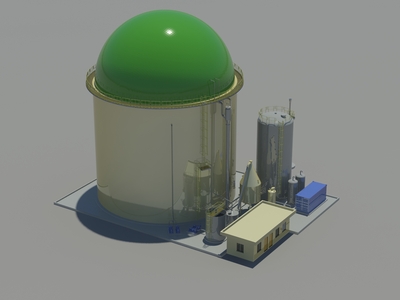GWE creates renewable energy from wastewater in Bangkok
Thursday, 09 February, 2012
In rapidly growing cities throughout Australasia and the Asia-Pacific, space is at a premium, clean water supply is precious and global warming is a major issue. In these cities, food and beverage companies face challenges to minimise their physical and environmental footprints and therefore must choose technology wisely. Ideally, the systems they use to upgrade wastewater quality should generate renewable energy while taking up less space than older systems.
Global Water Engineering (GWE) has provided a solution to these challenges. Represented in Australasia by CST Wastewater Solutions, the company has used advanced anaerobic technology to comply with and exceed environmental objectives at a confectionery plant. To make the challenge even more complex, the plant is located in Bangkok, falling under one of the toughest municipal regulatory regimes in Asia.

Bangkok’s population is currently in excess of eight million people - and is growing at a rapid rate. The Thai government has strong plans to combat global warming that this increasing population is generating.
In line with Bangkok’s Action Plan on Global Warming Mitigation 2007-2012, an international confectionery company recently upgraded its Bangkok plant using advanced anaerobic technology from GWE that cuts the chemical oxygen demand (COD) from discharge water by more than 90% to 1600 mg/L.
The new process water treatment plant occupies only 60 m2 and has not only lifted output standards beyond specification, but also produces 1800 m3 of biogas each day at nominal load. “It is exceeding the 90% COD removal specification in service and frequently achieving 95%,” said GWE CEO Jean Pierre Ombregt.
By delivering biogas at 70% methane content to power boilers and heat processes, the plant saves on expensive and polluting bunker oil. The wastewater plant is using less energy than the previous system.
“Previously, the plant engineer said they had two big aerators going all the time. Now they find they don’t need them, even though they are expanding production,” said Ombregt. “You can see the water is very clean and there is no smell.”
The plant’s wastewater passes through several pretreatment steps before entering a GWE methane reactor. In the reactor, the wastewater’s organic content is digested by bacteria in a closed reactor. This degrades the compounds and converts them into valuable biogas and cleaned effluent.
The biogas powers the plant’s boiler drying equipment, with surplus power being sold back to the grid. The company saves money on bunker oil, which is subject to wide fluctuations in price.
“The confectionery plant installation shows how it is possible to attain top environmental standards of wastewater cleanliness while generating green power on compact sites. A high-efficiency anaerobic/aerobic system that is properly designed from the outset occupies less space than the system it replaces,” said Ombregt.
GWE specialises in industrial wastewater solutions and renewable energy solutions. Its wide range of technologies encompasses solutions for water recycling; digestion of biomass, sludge and slurries; biogas production and re-use; bioenergy and carbon credits.
In-house ginger processing for beverage maker
A ginger beer manufacturer reduces its supply risk by investing in pack-house technology to...
Tailor-made solutions for sliced meat on show at IFFA
At this year's IFFA in Frankfurt, the MULTIVAC Group will be showing its latest line...
Five ways emerging tech can help food and beverage manufacturers
As food manufacturers embrace new innovations, they must also navigate the complex landscape of...














